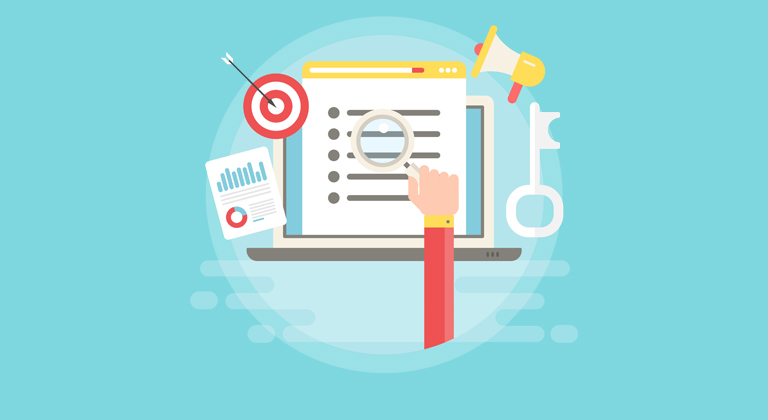Ads work best when you think like a reader
Great fiction novels are often filled with a roster of unique and believable characters, each with their own backstory that define how they react to the events of the story. As the author of that book, your job is figuring out what those actions and reactions would be, even when they might be very different than how you, personally, would behave in that same situation. One way to do that is by imagining yourself as that character, viewing the world through their eyes and colored by their history instead of your own.
As Ginger explains this week, when it comes to improving the sales of a poorly performing book, you can actually rely on some of those same skills. Instead of looking at your ads in terms of what you meant or hoped for them to convey, you should take a walk through the same buying journey that your readers are faced with in an attempt to identify the stumbling blocks standing in the way of them clicking the “buy” button.
So, I’ve been fully immersed in the world of digital advertising recently – helping authors use tools like Facebook and Advertising on Amazon to promote and sell their self-published books. Through doing that, I’ve come to realize there’s one thing nobody seems to talk about when it comes to digital advertising:
It’s hard.
There are all sorts of books, courses, and subscription services you can sign up for to teach you about marketing your books (ahem, yes, I made one myself) and understandably, they always talk to you about the promise of what advertising can deliver…
…but it’s a long journey to actually get there!
Access to digital advertising platforms is so easy these days. You can run self-service ads on Facebook, Twitter, TikTok, and even Amazon directly. There are no shortage of platforms willing to take your money so you can show your products to thousands or even millions of potential customers – but the one thing they’ll never offer you is a guarantee that such advertising will work.
Because the chances are, it won’t – especially if you’re somebody new to digital advertising, and trying to figure it all on your own (as most self-published authors are when they start out.)
Advertising is a deceptively complex science – and even though we have so many more analytical tools available to us than Don Draper and the original “Mad Men” of advertising did, there’s still so much more nuance to advertising than people realize.
How Google ruined advertising
When I started out in my career, I was a copywriter for radio commercials, and the ‘old school’ mentality of the Don Draper era was still in operation. One of my best clients, who ran a huge double glazing firm, once told me the secret to advertising was: “If you throw enough sh-t at the wall, some of it will stick.”
Back in those days, companies spent their advertising budgets never truly knowing which platforms actually provided them with a return on their investment. Another one of my client’s viewpoints was: “I know half of my advertising is working – I just don’t know which half.”
Then, along came digital advertising – and services like Google Adwords changed the game completely by allowing advertisers to track the entire buying journey for a customer – from the moment they first clicked on a search result to the moment they clicked “Add to Cart” and “Buy Now.”
But the problem is, these analytics don’t tell the whole story of what inspires somebody to actually buy your product; and therefore when self-published authors and other entrepreneurs jump into digital advertising for the first time, they have unrealistic expectations about what that advertising is actually going to do for them.
While it obviously is possible to run digital advertising campaigns that work and return a profit on your investment, it’s not easy to set them up – and it’s almost guaranteed that most self-published authors will lose money on advertising before they ever make any of it back.
It’s all about the customer…
One of the problems with digital advertising is that it all looks like a numbers game – which, in some ways, it is. The difference between an advertising campaign that makes money and one that loses money is, after all, can be less than a penny.
But that ignores the fact that you’re advertising to people, not numbers. Sure, your ad might have received 1,000 impressions this morning; but did you stop to think about how each of those “impressions” was actually a real-life person scrolling through their phone, seeing your ad, and then choosing whether or not to click on it?
Maybe they’re on their phone while in line at the DMV. Maybe they’re mindlessly scrolling through Facebook while sitting in bed. Perhaps they’re waiting for their crush to slide into their DMs, and just checking out what’s trending in the meantime.
Whatever their story is, it’s their story. You are actually taking a split-second to intrude into the life of a complete stranger – a living, breathing human being. When you take a second to think about it in those terms (just think about Impressions alone) it’s actually quite terrifying how much power digital advertising has given us.
In the days of Don Draper, you could spent tens of thousands on a Times Square billboard and have barely a million people look at it over the course of a month – and still think that’s incredible!
But today, digital advertising gives you the opportunity to reach just as many people for just a few hundred dollars – and, what’s more, they’re people who’ve been pre-vetted to be interested in what you’re offering, rather than just folks hurrying past to catch their train.
I still don’t think entrepreneurs truly appreciate what an opportunity this is. It’s a game-changer. Human society will never be the same again…
…but it still comes down to those pesky humans.
Digital advertising didn’t change anything about advertising. It just allows individuals to leverage and scale advertising in a way that was never available to them before. At the end of the day, though, successful advertising still comes down to acknowledging that real people are the ones eventually seeing your ads.
The quickest way to fail in digital advertising is to forget that fact and distill everything down to Impressions, Clicks, and Conversions.
The Human Journey
The importance of this fact was taught to me through another snippet of wisdom my double glazing client shared with me:
“It doesn’t matter how much money you spend if you’re advertising something people don’t want to buy.”
This is perhaps the biggest, chewiest, most jagged little pill that self-published authors and other entrepreneurs have to swallow: Sometimes, people just don’t want to buy your stuff; and when that’s the case, it doesn’t matter how many millions of Impressions you get, or what your Cost-Per-Click is.
When I work 1-on-1 with self-published authors to try and help them with their advertising, that’s generally the biggest issue I find with their campaigns: The fact that they’re advertising a book people just don’t want to buy.
It’s not that it’s a bad book, necessarily. In fact, I’ve never worked with a client who’s written a ‘bad’ book. Often, though, their book needed a lot of work that they didn’t realize before it could become marketable.
Maybe the cover was off-brand for the genre they publish in. Maybe their blurb lacked punch. Perhaps they had a typo in their Look Inside preview. In any event, the people who are seeing or even clicking on that author’s ads aren’t buying the product, and there’s often a diagnosable reason for that.
In these cases, the quickest way I’ve found to help self-published authors start running profitable digital advertising campaigns has nothing to do with advertising. It’s all to do with tweaking, polishing, and perfecting their book (and its Product Page on Amazon) so more of the people who arrive there through advertising eventually click “buy.” That’s what you call a Conversion in digital advertising.
This is why it’s so important to always remember that you’re advertising to real, live human beings – and to try to see the journey your ad takes them on through their eyes. If you can figure out what’s turning them off from buying your book, you’ve made the biggest breakthrough in figuring how to turn them on instead.
The Buying Journey
The fact that people hire marketing experts and spend hundreds of dollars on courses to learn about advertising is precisely because it isn’t easy – and just because it’s easily accessible doesn’t mean that entrepreneurs are going to start off making money with it.
This is a preconception that a lot of self-published authors have when they start out advertising – and I know, because I was one of them!
I started off thinking that advertising would be as simple as Insert Budget = Receive Profit because of course people who saw my books would want to buy them!
But I lost a lot of money thinking like that – and I could have saved much of it if I’d taken the time to consider my advertising experience through the eyes of one of the thousands of people who were actually seeing my ads.
When you take the same journey you hope your potential readers will, it’s easy to understand why you lose a lot of them en route – and also much easier to correct the problem.
Here’s what a customer journey might look like to you:
- Audience: Who do you intend on seeing your ads? Back in the Mad Men days, you might have a million random people passing by your billboard. On Facebook, you can make sure those million people fit a demographic. For me, I generate a Lookalike Audience for Facebook based on subscribers from my mailing list; meaning I’m leveraging Facebook’s algorithm to target people who fit the profile of my readers. Doing this improved the performance of some of my ads by up to 90% over an audience generated using Interests, so it’s worth doing. Simply not identifying your audience correctly guarantees failure.
- Impressions: Once you define your audience, how effectively can you convince Facebook or Amazon to show your ads to them? If your ads lack relevance, or you don’t bid competitively, you might encounter problems even having people see your ads (and if they can’t see your ads, they can’t click on them!)
- Creative: So, you’ve got your ad in front of your target audience. What’s going to stop them from scrolling and make them click on it? You’ll need an image or video that attracts their attention, and two lines of text that convince them to tap “Learn More.” If your creative isn’t enticing enough, you’ll get tons of Impressions but no Clicks.
- Clicks: So, people are clicking on your ads! Great! Except if those Clicks don’t convert into customers, all this is doing is costing you money. This is why I try to convey as much information to a potential customer before they click. For example, I’ve created a template for my ads which includes a graphic of the Amazon Kindle and the Kindle Unlimited logo, because this way my ads wordlessly communicate that the sexy creative will lead them to an eBook and it’ll be free if they have a Kindle Unlimited subscription. These non-written cues help people who see my ad know what they’re getting before they click on them (and meeting expectations vastly increases Conversion rates.)
- Conversions: Your ad doesn’t sell your book. Your Product Page does. Now you’ve got a potential reader to Amazon, it’s up to your blurb, reviews, Look Inside and other tiny details to nudge enough people toward clicking “Buy Now”. This is where your advertising makes it or breaks it (and, ironically enough, it’s the one part independent of ads themselves.)
Each of these steps in the journey give your potential customers an opportunity to drop off, so you’ve got to make each one as compelling as possible. This means you’ve got to go through the same journey they do; and be tough and frank with yourself about whether your book is living up to the budget you’re sinking into advertising it.
When most self-published authors start advertising, they don’t consider this journey, and that’s why their ads fail to perform. Too many of them then quit while they’re behind, because they similarly don’t understand how much influence they have on improving the experience people have when they click on their ads. They’ll often claim “advertising doesn’t work” when in fact, the only reason it doesn’t work for them is because there’s a problem in the journey they were taking their audience on that they stubbornly refused to identify.
A good case in point – I once managed to double my conversion rate (the number of people who clicked on my ad, compared to the number who eventually bought my book) by rewriting the first chapter (the part potential readers saw in the Look Inside.) By tightening that up, I turned an advertising campaign that had been bleeding money into one that was profitable; and it proved to me that it could be done; but I’d have to turn into Sherlock Holmes to figure out how.
Yet, if I hadn’t been willing (or desperate) enough to invest that time, effort, and money into figuring out what the problems were, I’d have never been able to fix them – and that’s the only reason I’ve had a measure of success while many other self-published authors have given up.
People need to be told this!
I think those of us who know a little about advertising have been so preoccupied with trying to be an authority on the subject, or sell our courses or expertise, that nobody has been honest with authors about the fact that even if they do everything right, their initial campaigns will often still lose them money, and it’ll take a lot of time, effort, and faith to change that.
But it can be done! So, if you’re a self-published author just starting out, don’t beat yourself up if you can’t get it right immediately. Like writing, editing, and cover design, the ability to advertise your books is another skill set that successful self-published authors have to learn themselves – and in many ways, it’s the hardest of all of them.
But for those who do manage to work out how to advertise their books profitably? Well, then it’s like discovering the secret of alchemy. Once you’ve learned the skills needed to advertise your books profitably, it changes the game completely. There are authors in the Top 100 books on Amazon right now who don’t have the best writing skills or the most original ideas. They just happen to still write pretty damn good books and have become successful by mastering how to advertise them.
Achieving both of those goals requires the same strategy: Thinking about your readers as people, not Impressions, Clicks, or Conversions.
If you can learn to write books that appeal to your readers, you have the skills needed to learn how to create advertising campaigns that appeal to them as well. Just don’t be surprised when your advertising journey ends up becoming as twisted, complex, and challenging as your writing journey has been!
But you can do it – and once you master the ability to run profitable digital advertising, it’ll change more than just the trajectory of your writing career. Right now, it’s one of the most valuable skills you can have, and something that can help launch many more ventures than just your catalog of books.












This excellent article aligns with my experiences in writing and promoting my novel, Utopia Café.